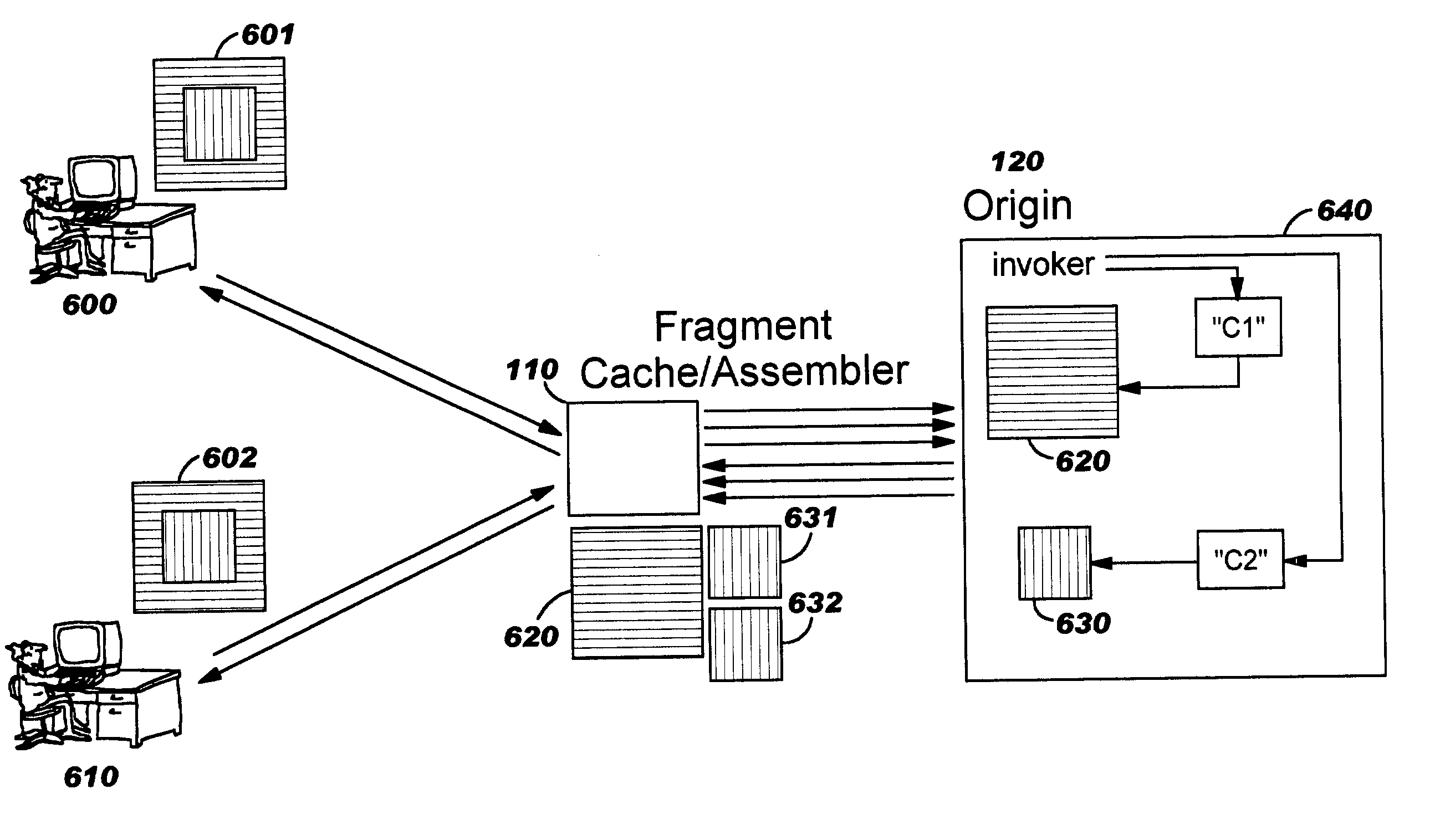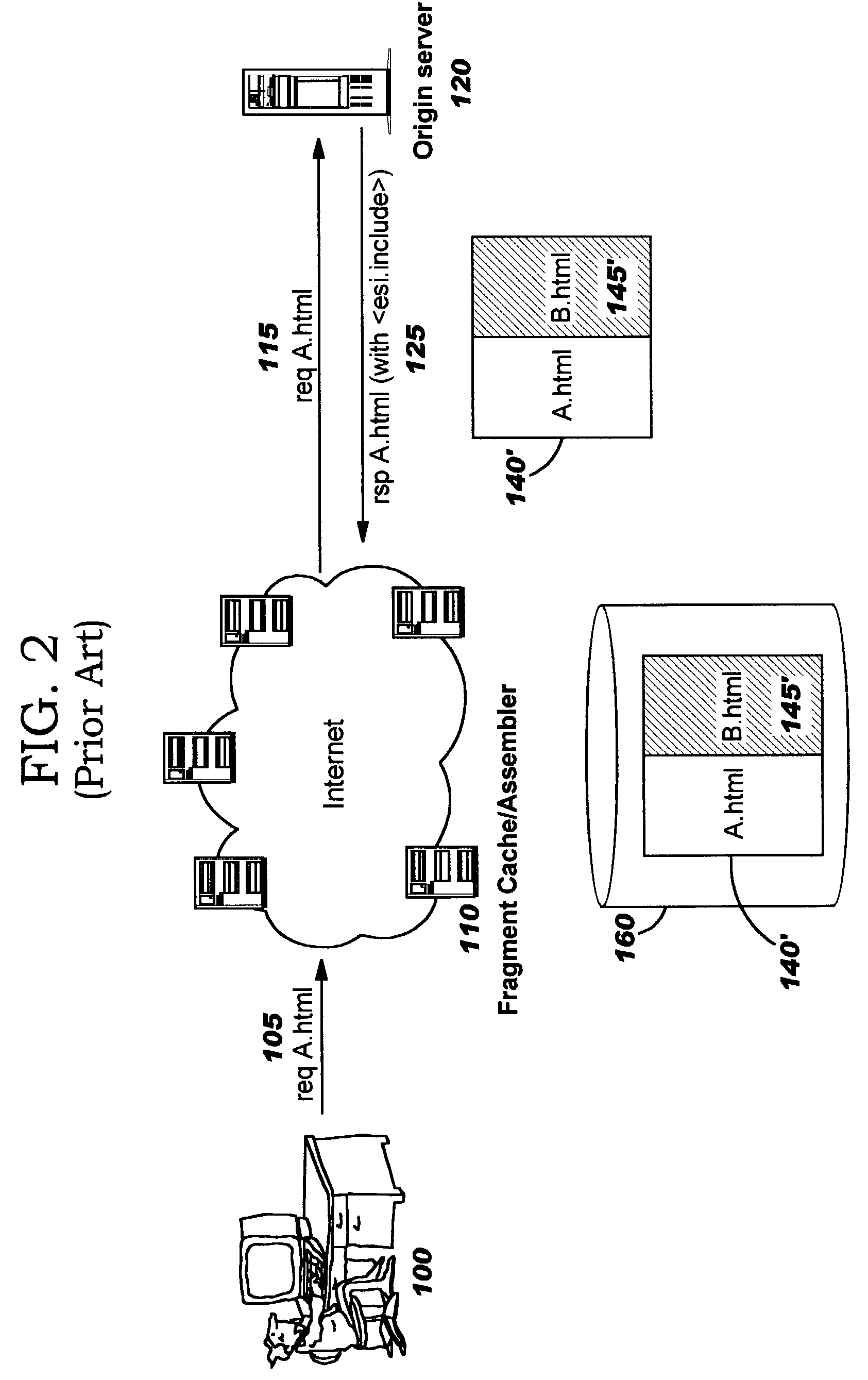Non-invasive technique for enabling distributed computing applications to exploit distributed fragment caching and assembly
a distributed computing and fragment technology, applied in computing, instruments, digital computers, etc., can solve the problems of increasing the cost of doing business, increasing the response time of requesters, and seriously degrading the overall system throughput, so as to reduce the computing burden on enterprise resources and reduce the round-trip time
- Summary
- Abstract
- Description
- Claims
- Application Information
AI Technical Summary
Benefits of technology
Problems solved by technology
Method used
Image
Examples
Embodiment Construction
[0031]The present invention defines non-invasive techniques for enabling distributed computing applications, and in particular those applications designed according to the MVC paradigm, to exploit distributed fragment caching and assembly. The techniques disclosed herein may operate within a network configuration such as the sample network shown in FIG. 1, where one or more origin servers 120 (i.e., application servers) provide programmatic generation of content meta-data, as will be described herein, enabling a fragment cache / assembler (for example, device 110) to carry out distributed fragment caching and assembly for dynamic content.
[0032]Before describing techniques of the present invention, the manner in which distributed fragment caching and assembly is performed using prior art techniques will be described with reference to FIGS. 1–3. These figures illustrate the core elements used for dynamic fragment caching and assembly, as well as the flow of requests and responses requir...
PUM
 Login to View More
Login to View More Abstract
Description
Claims
Application Information
 Login to View More
Login to View More - R&D
- Intellectual Property
- Life Sciences
- Materials
- Tech Scout
- Unparalleled Data Quality
- Higher Quality Content
- 60% Fewer Hallucinations
Browse by: Latest US Patents, China's latest patents, Technical Efficacy Thesaurus, Application Domain, Technology Topic, Popular Technical Reports.
© 2025 PatSnap. All rights reserved.Legal|Privacy policy|Modern Slavery Act Transparency Statement|Sitemap|About US| Contact US: help@patsnap.com



